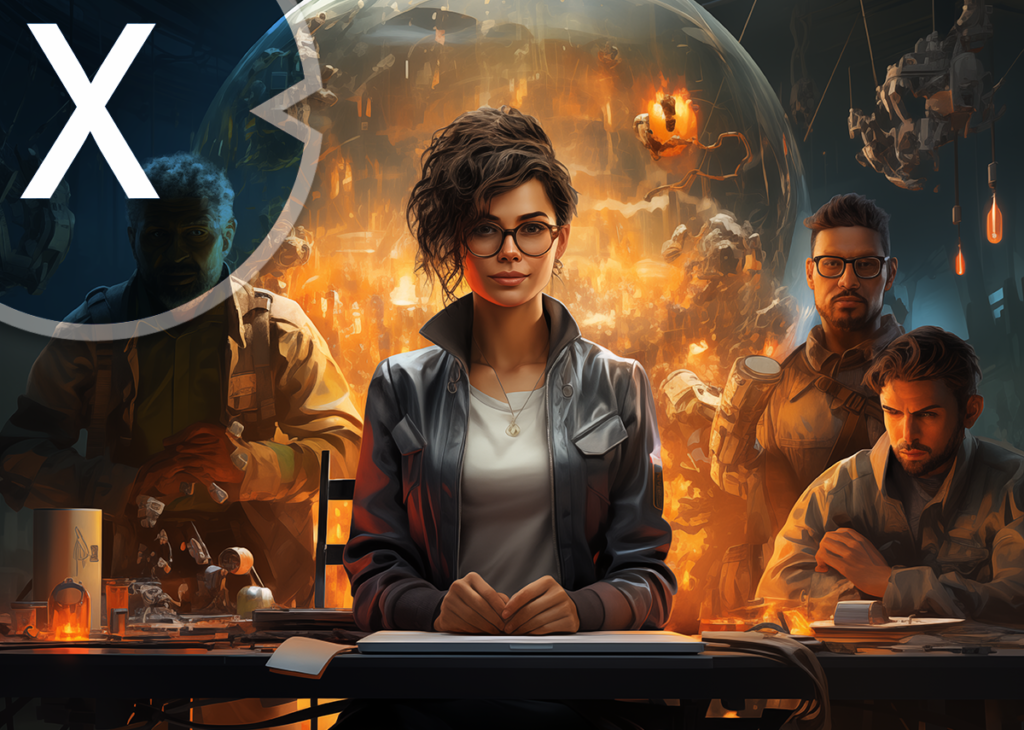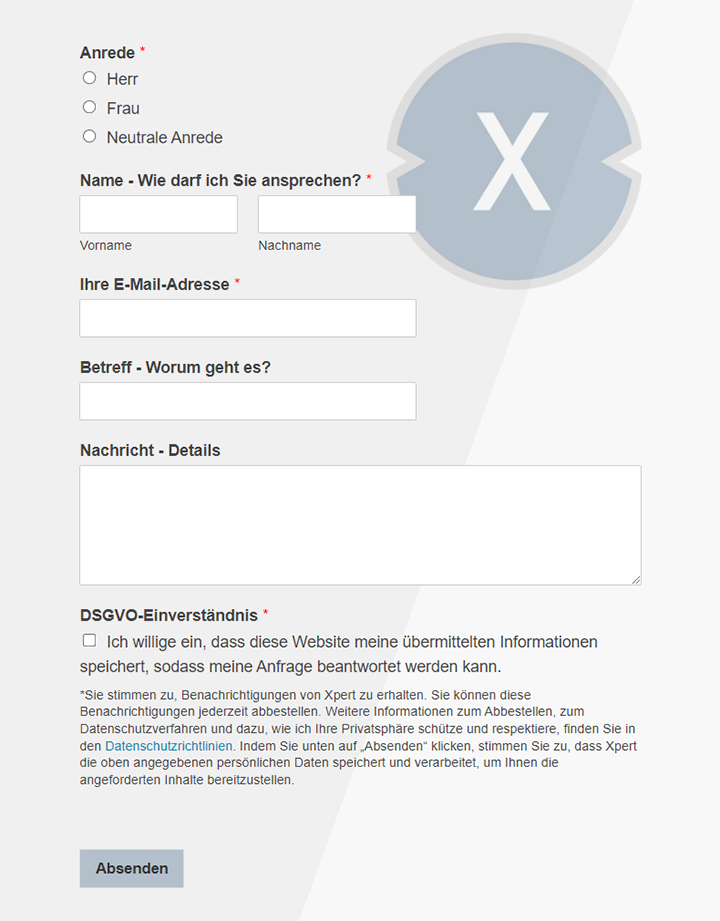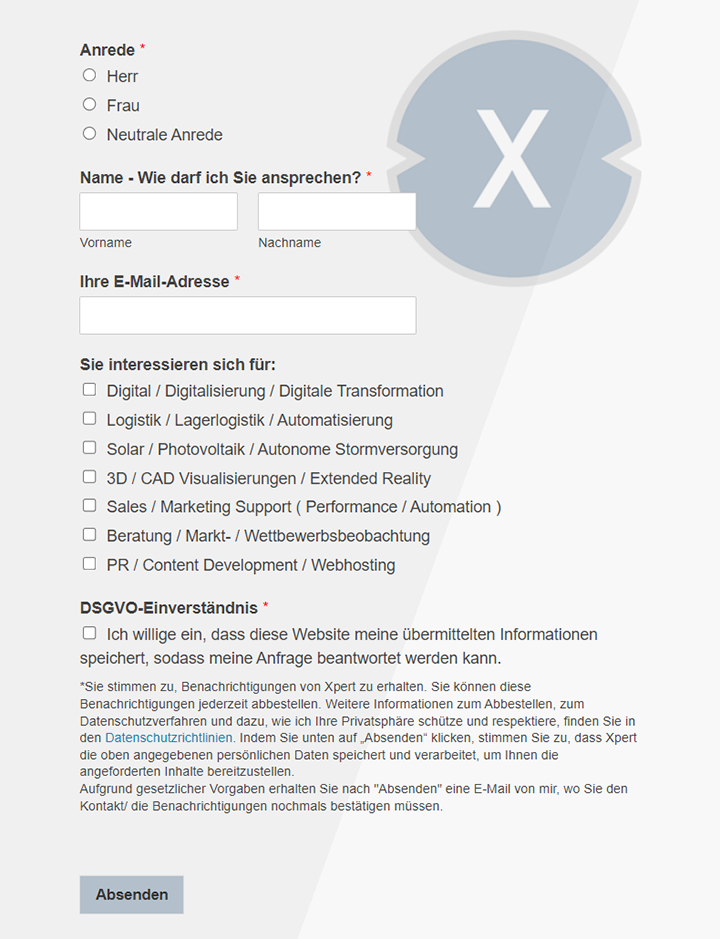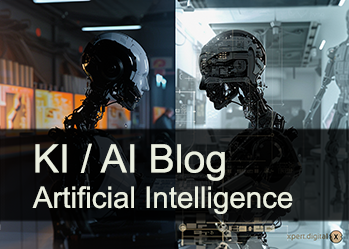Hooray, GPT-5 is here! Hype or not, what does GPT-5 offer us more? All the important questions and answers at a glance.
Xpert pre-release
Language selection 📢
Published on: August 8, 2025 / Updated on: August 8, 2025 – Author: Konrad Wolfenstein

Hooray, GPT-5 is here! Hype or not, what does GPT-5 offer us more? All the important questions and answers at a glance – Image: Xpert.Digital
The GPT-5 era is here – and it holds a big surprise (and a warning)
GPT-5: Just hype or a real quantum leap? Has AI's biggest problem been solved? What really makes GPT-5 better?
What is GPT-5 and why is it so important?
GPT-5 is OpenAI's latest large-scale language model, officially released on August 7, 2025. It marks a significant milestone in the development of artificial intelligence and is considered the most advanced model of its kind to date. The significance of GPT-5 lies in its ability to be the first "unified" model to combine various AI capabilities into one system. While previous models like GPT-4 were primarily focused on conversation, GPT-5 integrates advanced reasoning, multimodal processing, and agentic capabilities into a single, coherent platform.
What makes GPT-5 special is its "mixture of experts" architecture with an intelligent routing system. This means the model automatically decides which processing path is best suited for a specific task. For simple queries, it uses a fast, efficient path, while for complex problems that require deeper thinking, it automatically switches to a "thinking" mode. This intelligent adaptation makes GPT-5 a versatile tool capable of handling both everyday and highly complex tasks.
Suitable for:
How does GPT-5 differ from its predecessors?
The main difference between GPT-5 and its predecessors lies in the paradigm shift from a reactive chatbot to a proactive agent. While GPT-3 felt like a conversation with a high school student and GPT-4 reached the level of a university student, according to OpenAI CEO Sam Altman, interacting with GPT-5 feels like talking to a doctoral-level expert. This improvement is evident in several areas.
First, GPT-5 boasts significantly improved reasoning capabilities. The model uses structured chain-of-thought reasoning, resulting in 30 percent higher accuracy on logical, mathematical, and multi-step problems. In the GPQA benchmark for PhD-level scientific questions, GPT-5 achieved an impressive 88.4 percent, compared to approximately 50 percent for GPT-4.
Second, GPT-5's multimodality is far more advanced. While GPT-4o was already able to process text, images, and speech, GPT-5 seamlessly integrates these modalities with significantly greater accuracy. In the MMMU benchmark for multimodal understanding, GPT-5 achieved 84.2 percent, a 14 percentage point improvement over GPT-4.
Third, and perhaps most importantly, is the drastic reduction in hallucinations. GPT-5 exhibits a 45 percent lower rate of factual errors than GPT-40. In reasoning mode, the hallucination rate drops by as much as 80 percent, making the model one of the most reliable AI systems ever developed.
What different versions of GPT-5 are there?
OpenAI has released GPT-5 as a family of specialized models, each optimized for different use cases. This strategic decision allows users and developers to select the model best suited to their specific needs.
The major version, "gpt-5," is the flagship model, designed for logical and multi-step tasks with deep reasoning and chain-of-thought execution. It offers the full power of the new architecture and is particularly suitable for complex problem solving, scientific analysis, and demanding programming tasks.
The "GPT-5-mini" is a lightweight version designed for cost-sensitive applications where speed and efficiency are more important than maximum performance. This model still achieves an impressive 54.3 percent in the AGI-1 test at a cost of just $0.12 per task.
GPT-5-nano is optimized for ultra-low latency and exceptionally fast execution. It is ideal for real-time applications that require immediate responses, such as interactive chatbots or live translation systems.
"GPT-5-chat" was specifically developed for advanced, natural, multimodal, and context-aware conversations, especially for corporate environments. This version optimizes interaction in longer conversations while maintaining context across extended dialogues.
Additionally, there is an exclusive “GPT-5-pro” version for paying Pro users, which offers even more advanced capabilities and higher processing limits.
Technical details and performance
What are the technical specifications of GPT-5?
The technical specifications of GPT-5 clearly demonstrate the progress compared to previous generations. The model uses a Mixture of Experts (MoE) architecture combined with the intelligent routing system. This architecture allows GPT-5 to activate various specialized "experts" within the model depending on the task type, resulting in more efficient and accurate processing.
GPT-5's context window has been impressively expanded. While GPT-4 operated with a context window of 32,000 tokens, GPT-5 can process up to one million tokens, depending on the model variant. The default is 272,000 tokens, which is enough to analyze approximately 200 pages of text simultaneously. This massive expansion allows the model to conduct extremely long conversations and perform complex document analyses without forgetting important information.
The output limit has also been significantly increased. GPT-5 can generate up to 128,000 tokens in a single response, equivalent to approximately 100 pages of text. This is particularly useful for creating extensive reports, detailed analyses, or complex programming tasks.
An important aspect is the knowledge cutoff. The major versions, GPT-5 Core and Pro, contain knowledge up to September 30, 2024, while the Mini and Nano versions are at the level of May 30, 2024. This ensures that the model has relatively up-to-date information, although external sources must still be consulted for breaking news.
How does GPT-5 perform in benchmarks?
GPT-5's benchmark results are impressive and set new standards in many areas. In the AIME 2025 Mathematics test, GPT-5 achieved a score of 94.6 percent, representing a near-perfect performance and the first time an AI model has achieved this level. This demonstrates the tremendous progress in mathematical reasoning and problem-solving ability.
GPT-5 particularly excels in the area of programming. On the SWE-bench Verified Test, which measures the ability to solve real GitHub issues, GPT-5 achieved a score of 74.9 percent – an improvement of approximately 45 percentage points over GPT-4. In the Aider Polyglot test for multilingual programming, the model even achieved 88 percent. These results make GPT-5 the most powerful programming assistant currently available.
On doctoral-level scientific questions (GPQA Diamond), GPT-5 achieved a score of 89.4 percent, significantly outperforming all previous models. In the area of multimodal tasks, the MMMU result of 84.2 percent demonstrates that GPT-5 has reached college-level visual problem-solving.
Particularly noteworthy is the low hallucination rate. In the CharXiv test for visual hallucinations, the error rate is only 9 percent, while other models like o3 have an error rate of 86.7 percent. On medical questions (HealthBench Hard), GPT-5 achieves 46.2 percent correctness, a massive jump from o3's 31.6 percent.
How much does it cost to use GPT-5?
GPT-5's pricing structure is differentiated to accommodate different user groups. For regular ChatGPT users, GPT-5 is available immediately as a standard model. Free users receive access to basic features, but with a limited number of requests. The Plus subscription, for €23 per month, grants a significantly higher quota of requests and faster response times.
Pro users, who pay €230 per month, can use GPT-5 unlimitedly and receive exclusive access to the Pro version of the model, which offers expanded capabilities and higher processing limits.
For developers who want to use GPT-5 via the API, pricing has become particularly attractive. The base model costs $1.25 per million input tokens and $10 per million output tokens. This represents a cost reduction of approximately 80 percent compared to GPT-4, while offering significantly improved performance. GPT-5-mini is even more affordable at $0.30 per million input tokens and $1.20 per million output tokens, while GPT-5-nano is the most cost-effective option at $0.10 per million input tokens and $0.40 per million output tokens.
This aggressive pricing makes advanced AI technology accessible to a wider range of applications and businesses, which should lead to accelerated adoption.
EU/DE Data Security | Integration of an independent and cross-data source AI platform for all business needs
Ki-Gamechanger: The most flexible AI platform – tailor-made solutions that reduce costs, improve their decisions and increase efficiency
Independent AI platform: Integrates all relevant company data sources
- Fast AI integration: tailor-made AI solutions for companies in hours or days instead of months
- Flexible infrastructure: cloud-based or hosting in your own data center (Germany, Europe, free choice of location)
- Highest data security: Use in law firms is the safe evidence
- Use across a wide variety of company data sources
- Choice of your own or various AI models (DE, EU, USA, CN)
More about it here:
GPT-5 in practical testing: strengths, weaknesses and ethical questions
Practical applications and skills
What new features does GPT-5 offer for regular users?
For everyday users, GPT-5 brings a number of improvements that make interacting with artificial intelligence more natural and productive. One of the most striking innovations is the four preset personalities users can choose from: Cynic, Robot, Listener, and Nerd. These personalities adapt the model's response style without having to be specified in each query. The "Listener," for example, displays
more empathy and asks questions, while the “nerd” provides detailed technical explanations.
Proactive support is another breakthrough. GPT-5 can now not only answer questions but also independently point out potential problems or opportunities for improvement. For example, if you show the model medical lab results, it not only explains the results but also proactively points out potential health risks and helps prepare questions for the next doctor's visit.
The ability to create "software on demand" is particularly impressive. Users can ask GPT-5 to create entire web applications, games, or tools without any programming knowledge themselves. The model not only generates the code but also explains how the application works and how it can be customized.
Improved multimodality allows users to combine images, text, and soon, videos into a single conversation. For example, you can upload a photo of a broken device and receive detailed, step-by-step repair instructions that include both visual cues and technical explanations.
Suitable for:
- GPT-5: The next generation of artificial intelligence of Openai – progress in thinking and performance
What does GPT-5 mean for developers and businesses?
For developers and companies, GPT-5 opens up completely new possibilities for integrating artificial intelligence into their products and processes. The API offers three main model sizes – gpt-5, gpt-5-mini, and gpt-5-nano – optimized for different use cases. Developers can trade off performance, speed, and cost depending on their requirements.
One of the most important new features is verbosity control. Developers can precisely specify how short or long the model's responses should be, which is crucial for specific use cases such as chatbots, technical documentation, or creative writing.
Freeform function calls allow developers to integrate GPT-5 more flexibly into their applications. The model can now perform complex, multi-step operations, calling external tools and APIs without having to program each step individually. The error rate when using tools has been reduced by 50 percent, resulting in more reliable automation.
For companies, the deep integration into the Microsoft ecosystem is particularly valuable. GPT-5 is available from day one in Microsoft 365 Copilot, Azure AI Foundry, GitHub Copilot, and Visual Studio Code. This allows companies that already use Microsoft products to seamlessly integrate GPT-5 into their existing workflows.
The enhanced security features, including "Safe Completions" technology, also make GPT-5 suitable for sensitive business areas such as financial services, healthcare, and legal services. The model can now provide helpful answers within defined security boundaries and transparently explain why certain requests cannot be fully fulfilled.
In which areas does GPT-5 show particular strengths?
GPT-5 demonstrates exceptional performance in several key areas that set it apart from its predecessors and the competition. In the field of software development, GPT-5 is unmatched. With a 74.9 percent success rate in solving real-world programming problems on GitHub, it significantly outperforms all other models. Developers report a game-changing experience in debugging complex codebases and building complete applications from simple descriptions.
In healthcare, GPT-5 demonstrates remarkable capabilities. Its error rate for medical questions is only 1.6 percent, compared to 12.9 percent for previous models. The model can analyze medical reports, point out potential health risks, and assist in the interpretation of complex lab results. It even adapts to geographical characteristics and local medical standards.
In scientific research, GPT-5 achieves almost expert level with an 89.4 percent score in the GPQA Diamond Benchmark. Researchers use the model to analyze complex scientific papers, generate hypotheses, and identify research gaps. Its ability to process over a million tokens enables the analysis of entire research corpora in a single pass.
For creative applications, GPT-5 offers significantly improved storytelling and content creation capabilities. The model demonstrates a better understanding of narrative structures, emotional arcs, and stylistic consistency. Content creators report a 30 percent improvement in the quality of creative texts compared to GPT-4.
In education, GPT-5 is revolutionizing personalized learning. The model can adapt to the learning level of individual students, translate complex concepts into understandable explanations, and create interactive learning materials. Its multimodal capabilities enable the explanation of diagrams, visual solution of mathematical problems, and delivery of learning content in various formats.
Challenges and criticisms
What problems and limitations does GPT-5 have?
Despite the impressive progress, GPT-5 is not without limitations. One of the biggest challenges remains continuous learning. Like its predecessors, GPT-5 cannot learn from new interactions or update its knowledge in real time. The knowledge cutoff of September 2024 means that the model has no information about current events unless provided externally.
The speed of development is a concern even for OpenAI CEO Sam Altman. He compared the development of GPT-5 to the Manhattan Project and expressed concerns about the "blazing pace of AI" that "far exceeds any oversight." This speed makes it difficult to fully understand and control potential risks before the model is widely deployed.
Another issue is computational intensity. Although GPT-5 is more efficient than its predecessors, it still requires significant computational resources, especially in "thinking" mode. This can lead to higher costs and longer response times for complex tasks. The environmental impact of this computational intensity is also a growing concern.
The black-box nature of the model remains problematic. Despite improvements in explainability, it is often impossible to understand how GPT-5 reaches certain conclusions. This is particularly problematic in regulated industries such as finance or medicine, where decisions must be traceable and auditable.
What are the ethical concerns with GPT-5?
The ethical challenges of GPT-5 are diverse and complex. The model's ability to create convincing content in various styles and formats increases the risk of misuse for disinformation and manipulation. Its multimodal capabilities exacerbate this problem, as it now also allows for the creation of convincing fake images and, soon, videos.
The concentration of power is another ethical concern. GPT-5 was developed primarily by Western technology companies, with OpenAI and Microsoft as the main players. This raises concerns about digital colonization and the underrepresentation of non-Western perspectives in AI development. Critics call for a more diverse and inclusive development of AI systems.
The potential job losses caused by GPT-5 are a pressing social problem. With its advanced capabilities in areas such as programming, writing, and analysis, GPT-5 could replace many jobs before society has time to adapt. Studies already show measurable efficiency gains in various industries, which could lead to job losses in the long term.
Privacy concerns remain. Although OpenAI has implemented security measures, it remains unclear how user data is processed and stored. GPT-5's ability to learn from context and recognize patterns could potentially be used to identify individuals or extract sensitive information.
Transparency regarding development is limited. OpenAI has not disclosed all details about its training methods, data sources, and decision-making processes. This lack of transparency makes it difficult for external researchers and regulators to fully assess the model's safety and fairness.
How does the competition react to GPT-5?
The release of GPT-5 has caused considerable movement in the AI industry. Anthropic, with its Claude model, has already captured 32 percent of the enterprise market share and is positioning itself as a more ethical alternative to OpenAI. Claude 4 Sonnet demonstrates particular strengths in analyzing extremely long documents and specialized coding tasks, although GPT-5 is superior in most benchmarks.
Google responded by announcing Gemini 2.5 Pro, which offers deep integration into the Google ecosystem and real-time web access. Google's strategy focuses on seamless integration with existing products like Gmail, Docs, and Search, occupying a different niche than OpenAI. Google's more aggressive pricing is aimed at gaining market share.
Meta takes a different approach with open-source models. Its Llama series offers researchers and developers the opportunity to make their own customizations, which is particularly attractive for companies that want full control over their AI systems. This open-source strategy could challenge the dominance of proprietary models like GPT-5 in the long term. xAI with Grok 4 demonstrates interesting performance in specific areas. In the ARC-AGI-2 benchmark for complex reasoning tasks, Grok 4 (Thinking) achieves approximately 16 percent, compared to 9.9 percent for GPT-5, albeit at significantly higher costs. Grok benefits from its integration with X (formerly Twitter) for real-time analysis of social media trends.
Chinese technology companies are also intensifying their efforts. Baidu, Alibaba, and others are developing their own large-scale language models specifically optimized for the Chinese market and the Chinese language. This development could lead to a fragmentation of the global AI market.
🎯🎯🎯 Benefit from Xpert.Digital's extensive, fivefold expertise in a comprehensive service package | R&D, XR, PR & SEM

AI & XR-3D-Rendering Machine: five times expertise from Xpert.digital in a comprehensive service package, R&D XR, Pr & SEM – Image: Xpert.digital
Xpert.Digital has in-depth knowledge of various industries. This allows us to develop tailor-made strategies that are tailored precisely to the requirements and challenges of your specific market segment. By continually analyzing market trends and following industry developments, we can act with foresight and offer innovative solutions. Through the combination of experience and knowledge, we generate added value and give our customers a decisive competitive advantage.
More about it here:
GPT-5 and the path to artificial general intelligence – opportunities and limitations
Rethinking AI: Why public discourse on GPT-5 is essential
Is GPT-5 a step towards artificial general intelligence (AGI)?
Sam Altman calls GPT-5 a "significant step" toward artificial general intelligence (AGI), but emphasizes that key capabilities are still missing. AGI is defined as AI that can outperform humans in most economically relevant tasks – a long-term goal pursued by OpenAI.
GPT-5 demonstrates impressive progress toward AGI. The ability to operate at an expert level across different domains, solve complex multi-step problems, and integrate different modalities are important steps. The drastic reduction of hallucinations and improved reliability bring the system closer to human-like performance.
However, GPT-5 still lacks critical capabilities for true AGI. Continuous learning from experience, the ability to self-improve, and a deep causal understanding of the world are not yet present. GPT-5 cannot independently develop new skills or expand its knowledge without human intervention.
The definition of AGI itself shifts with every advance. What was once considered a sign of AGI is now viewed as a specialized skill. This "moving goalpost" makes it difficult to determine how close we actually are to AGI. Experts estimate that, despite the progress of GPT-5, significant conceptual breakthroughs are still needed to achieve true AGI.
The debate about AGI is not only technical, but also philosophical. Questions about consciousness, intentionality, and true understanding remain unanswered. GPT-5 may produce human-like responses, but whether it actually "understands" or merely cleverly mimics patterns remains controversial.
Suitable for:
- Agentic Ai | Latest developments in Chatgpt from Openai: Deep Research, GPT-4.5 / GPT-5, emotional intelligence and precision
What social changes could GPT-5 bring about?
GPT-5 has the potential to trigger profound societal change. In education, it could lead to a democratization of access to high-quality, personalized instruction. Every student could have a personal, expert-level tutor, which could be particularly transformative in underserved areas.
The world of work is facing significant upheaval. While GPT-5 will create new jobs in AI development, monitoring, and integration, traditional roles in areas such as content creation, basic programming, and data analysis could become obsolete. The speed of this change could cause social tensions if retraining and support programs are not implemented in a timely manner.
In healthcare, GPT-5 could revolutionize diagnosis and treatment. The ability to analyze medical data and provide expert-level advice could be lifesaving, especially in regions with a doctor shortage. At the same time, this raises questions about responsibility and liability in AI-assisted medical decisions.
The creative industry is already experiencing a paradigm shift. GPT-5 enables anyone to create professional content, which, on the one hand, democratizes creative possibilities, but on the other, also questions the value of human creativity. The line between human and machine creativity is increasingly blurring.
Politically, GPT-5 could have both positive and negative effects. On the one hand, it could help citizens better understand complex political issues and make more informed decisions. On the other hand, it increases the risk of sophisticated disinformation and manipulation, which could endanger democratic processes.
How should society deal with GPT-5 and similar technologies?
Dealing with GPT-5 and similar technologies requires a balanced approach between innovation and caution. Regulation is necessary, but it should be flexible enough not to stifle innovation. The EU, with its AI Act, is attempting this balancing act by imposing risk assessments and transparency requirements without outright banning the technology.
Education is a key factor. Society must develop AI literacy to use these technologies effectively and safely. This includes not only technical understanding but also critical thinking about the limitations and potential dangers of AI. Schools and universities must adapt their curricula to prepare students for an AI-infused future.
Ethical guidelines and standards must be developed and enforced. This should be done in an inclusive process that involves various stakeholders – from technology companies to ethicists to affected communities. The development of AI must not be left solely in the hands of a few technology companies.
International cooperation is crucial. AI technologies know no borders, so regulation and ethical standards must also be coordinated globally. This could require the creation of international organizations, similar to those for nuclear energy or climate change.
Promoting open-source alternatives and decentralized AI systems could help reduce the concentration of power. When AI technology is more widely available, more people and organizations can benefit from its advantages and contribute to its responsible development.
Finally, a continuous societal debate is necessary. The development of AI like GPT-5 should not take place in secret, but should be the subject of public discussion. Only through broad participation can we ensure that these powerful technologies are used for the benefit of all.
Future of AI: What GPT-5 means for society and technology
What are the key findings about GPT-5?
GPT-5 undoubtedly marks a significant advance in the development of artificial intelligence. The unification of various AI capabilities into a coherent system, the drastic reduction of errors and hallucinations, and the impressive performance in various benchmarks demonstrate that we have entered a new era of AI technology.
The practical improvements are remarkable. From the ability to create complete software applications to precise medical advice to the seamless integration of different modalities – GPT-5 pushes the boundaries of what's possible with AI. The fact that this technology is now available to free users democratizes access to advanced AI.
At the same time, we cannot ignore the challenges. The ethical concerns, potential societal impacts, and technical limitations require careful consideration and proactive action. The speed of development, which is worrying even among developers, underscores the need for robust governance structures.
Suitable for:
- GPT-4.5 & GPT-5 – announcement by Sam Altman on X (Twitter): The new AI models from Openaai! – What does that mean for us?
What's next for AI development?
The future of AI development beyond GPT-5 promises further dramatic advances. OpenAI and other companies are already working on the next generations, which may offer true continuous learning, even better multimodal integration, and perhaps even approaches to causal understanding.
Competition will intensify. With Anthropic, Google, Meta, and others developing their own advanced models, we can expect an acceleration of innovation. This competition could lead to faster progress, but it also raises questions about security and responsible development.
The integration of AI into all aspects of daily life will accelerate. From personalized educational assistants to AI-powered scientific research to creative human-machine collaborations – the boundaries will continue to blur.
The regulatory landscape will need to evolve. Governments around the world are grappling with how to regulate these powerful technologies without hampering innovation. We can expect new laws and international agreements to emerge to guide the development and use of AI.
Societal adaptation will be crucial. Education systems, labor markets, and social structures must adapt to a world in which AI systems like GPT-5 are ubiquitous. This requires not only technical adaptations but also cultural and philosophical reorientations.
Ultimately, humanity stands at a turning point. GPT-5 is more than just a technological advancement – it's a catalyst for fundamental changes in the way we work, learn, create, and interact with each other. How we use and shape this technology will significantly influence the future of human civilization. The responsibility lies with all of us to ensure that this powerful technology is used for the benefit of all humanity.
We are there for you – advice – planning – implementation – project management
☑️ SME support in strategy, consulting, planning and implementation
☑️ Creation or realignment of the AI strategy
☑️ Pioneer Business Development
I would be happy to serve as your personal advisor.
You can contact me by filling out the contact form below or simply call me on +49 89 89 674 804 (Munich) .
I'm looking forward to our joint project.
Xpert.digital – Konrad Wolfenstein
Xpert.Digital is a hub for industry with a focus on digitalization, mechanical engineering, logistics/intralogistics and photovoltaics.
With our 360° business development solution, we support well-known companies from new business to after sales.
Market intelligence, smarketing, marketing automation, content development, PR, mail campaigns, personalized social media and lead nurturing are part of our digital tools.
You can find more at: www.xpert.digital – www.xpert.solar – www.xpert.plus



























